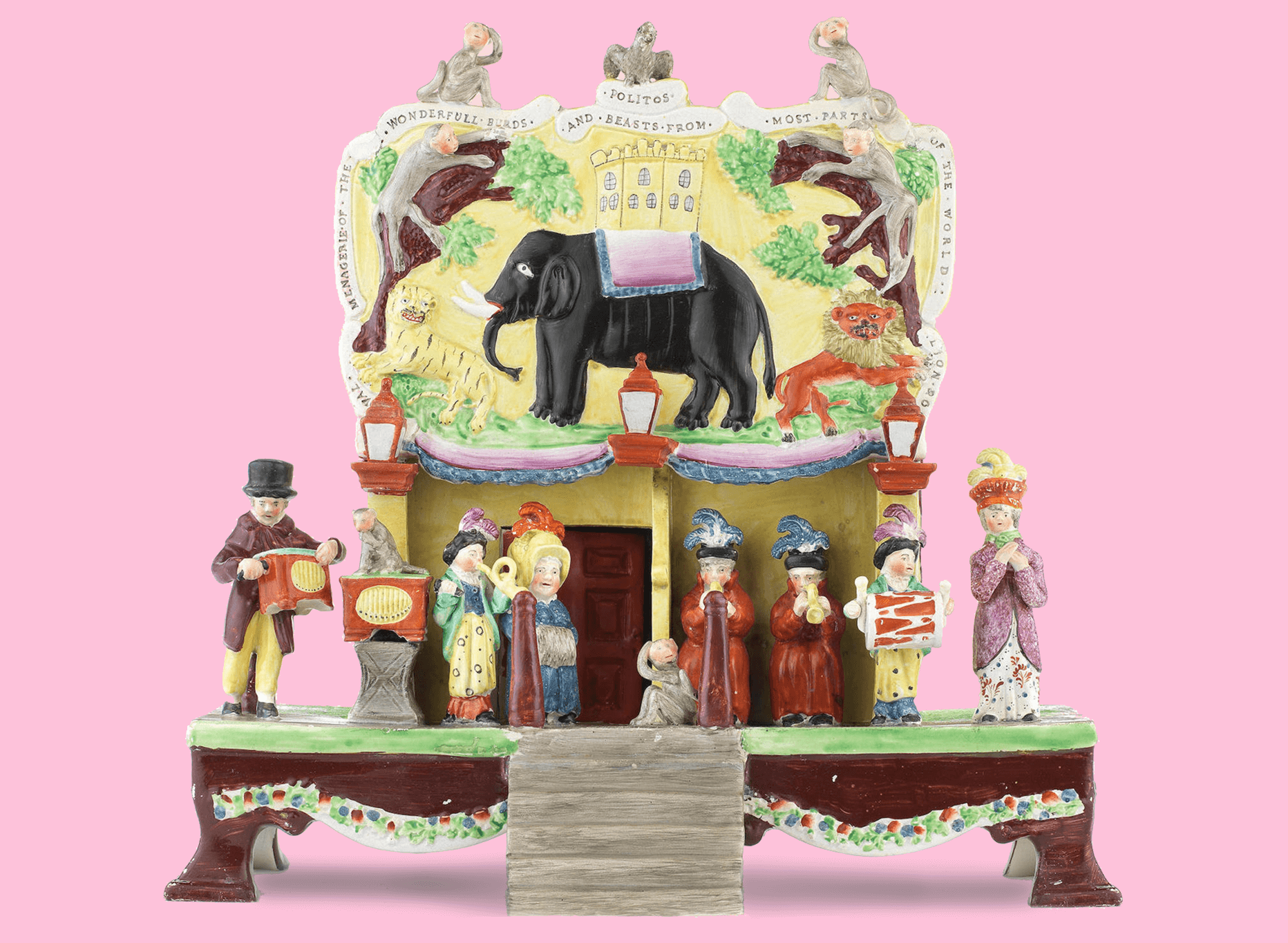Bull-baiting figure
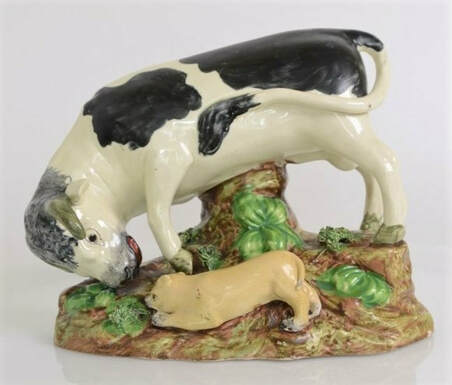
Bull-baiting was an ancient sport which involved pitting a bull against another animal. This was usually a dog such as a bull terrier, bull dog or mastiff.
In England during the time of Queen Anne, bull-baiting was practiced in London at Hockley-in-the-Hole twice a week and was also reasonably common in provincial towns. At Tutbury, a bull was tied to an iron stake so that it could move within a radius of about 30 feet. The object of the sport was for the dogs to immobilize the bull.

Before the event started, the bull’s nose was blown full of pepper to enrage the animal before the baiting. The bull was often placed in a hole in the ground. A variant of bull-baiting was “pinning the bull”, where specially-trained dogs would set upon the bull one at a time, a successful attack resulting in the dog fastening his teeth strongly in the bull’s snout. The extinct Old English Bulldog was bred especially for this sport.
Bull-baiting continued into the 19th century. Bull-baiting dogs, including bulldogs and bull terriers, were bred to bait animals, mainly bulls and bears. During bull-baiting the dog would attempt to flatten itself to the ground, creep as close to the bull as possible, then dart out and attempt to bite the bull in the nose or head area. The bull would often be tethered by a collar and rope which was staked into the ground. As the dog darted at the bull, the bull would attempt to catch the dog with his head and horns and throw it into the air.
The sport began to die out early in the 19th century, both because the baiting caused a public nuisance and because of new concerns about animal cruelty. A Bill for the suppression of the practice was introduced into the House of Commons in 1802 but was defeated by thirteen votes. It was not finally outlawed until parliament passed the Cruelty to Animals Act 1835, which forbade the keeping of any house, pit, or other place for baiting or fighting any bull, bear, dog, or other animal.
More Figures of the month
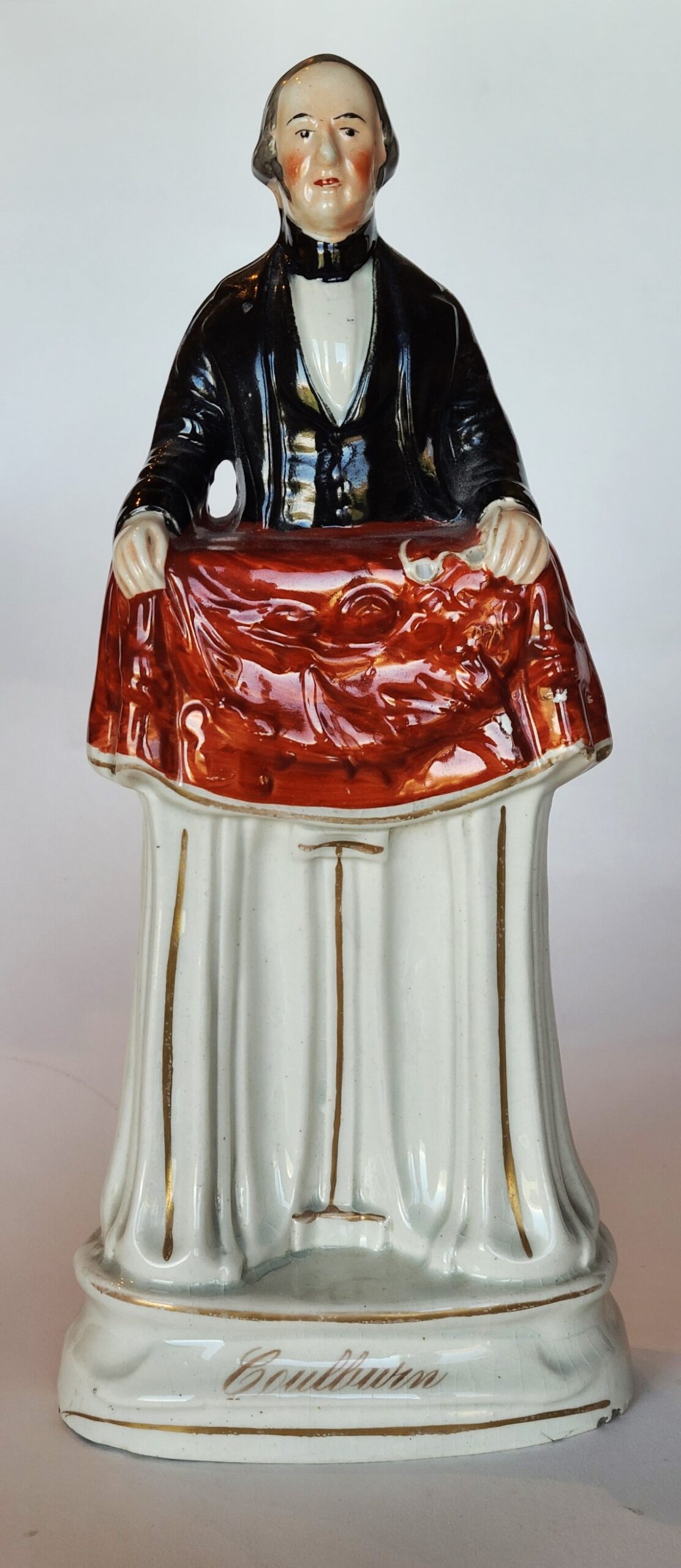
Reverand Edward Meyrick Goulburn
This is a rare Staffordshire figure of the Reverand Edward Goulburn, standing approximately 11 1/2” tall and dating to about 1860.
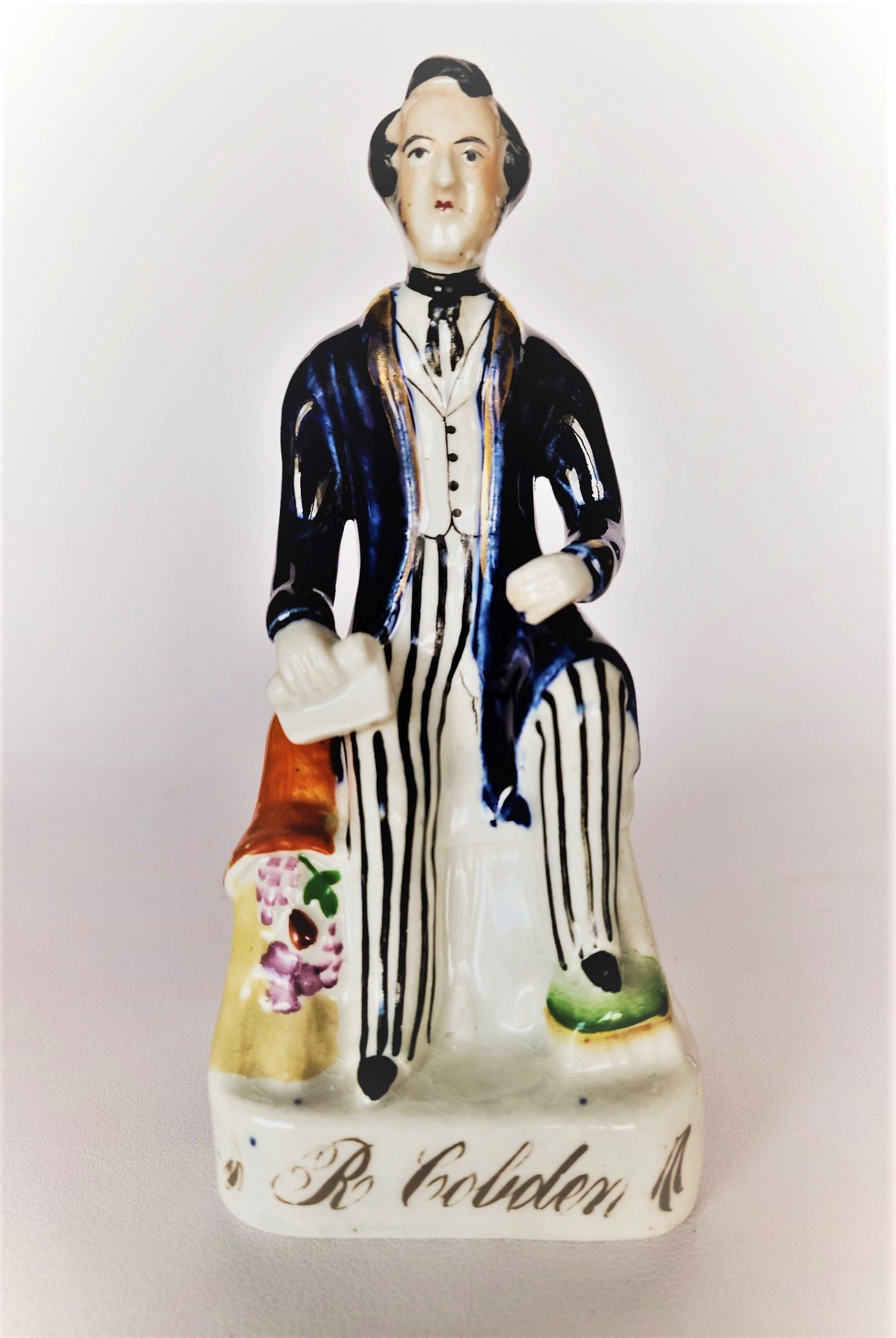
Richard Cobden
This is a rare Staffordshire figure of Richard Cobden, the English politician, economist, and leader of the effort to abolish the Corn Laws in 1846.
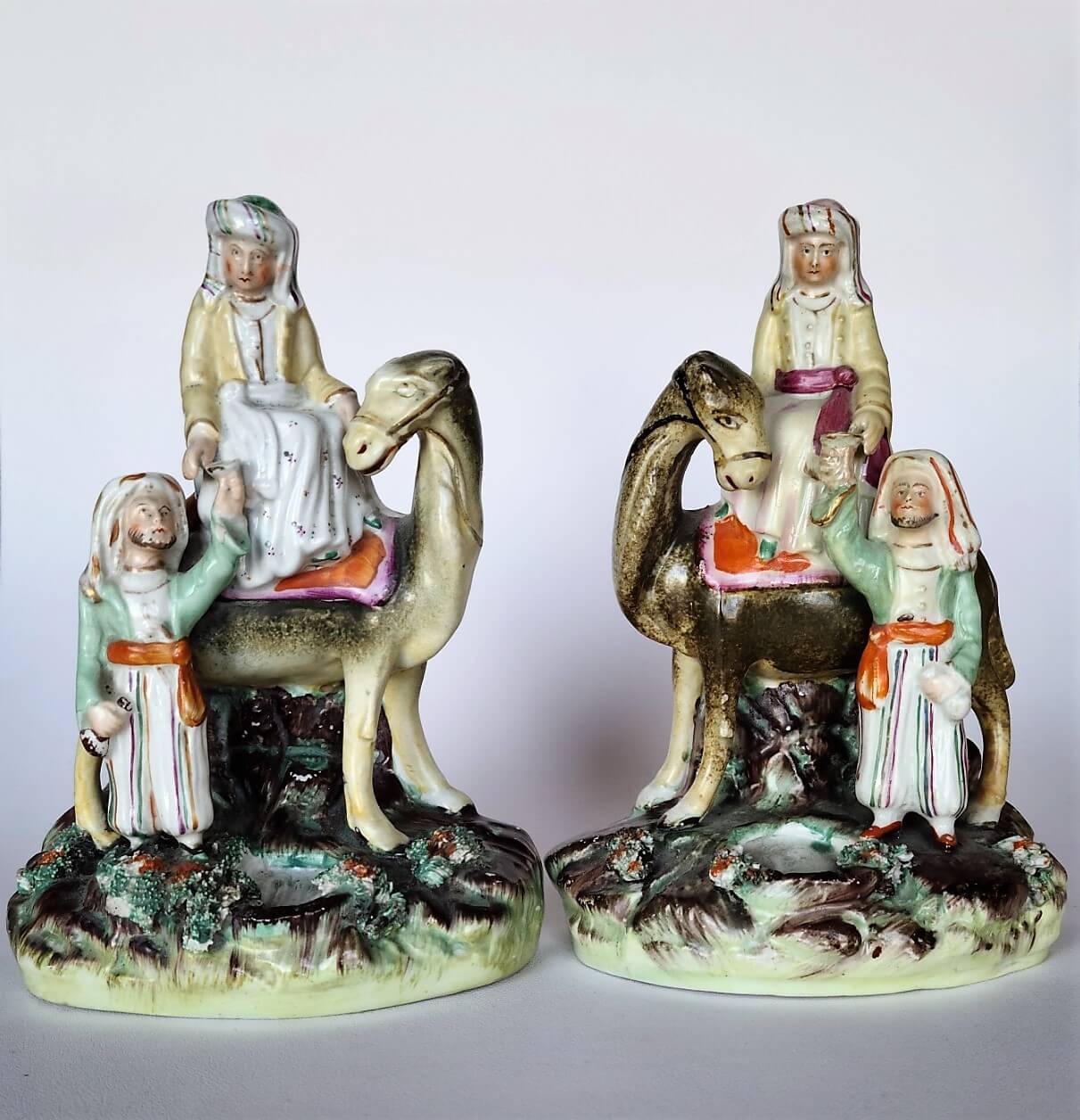
Rare pair of camel figures
This is a rare, mirror image pair of Staffordshire camel figures. They are generally believed to represent Lady Hester Stanhope and her personal physician and companion Dr. Charles Lewis Meryon, though this attribution is not certain.
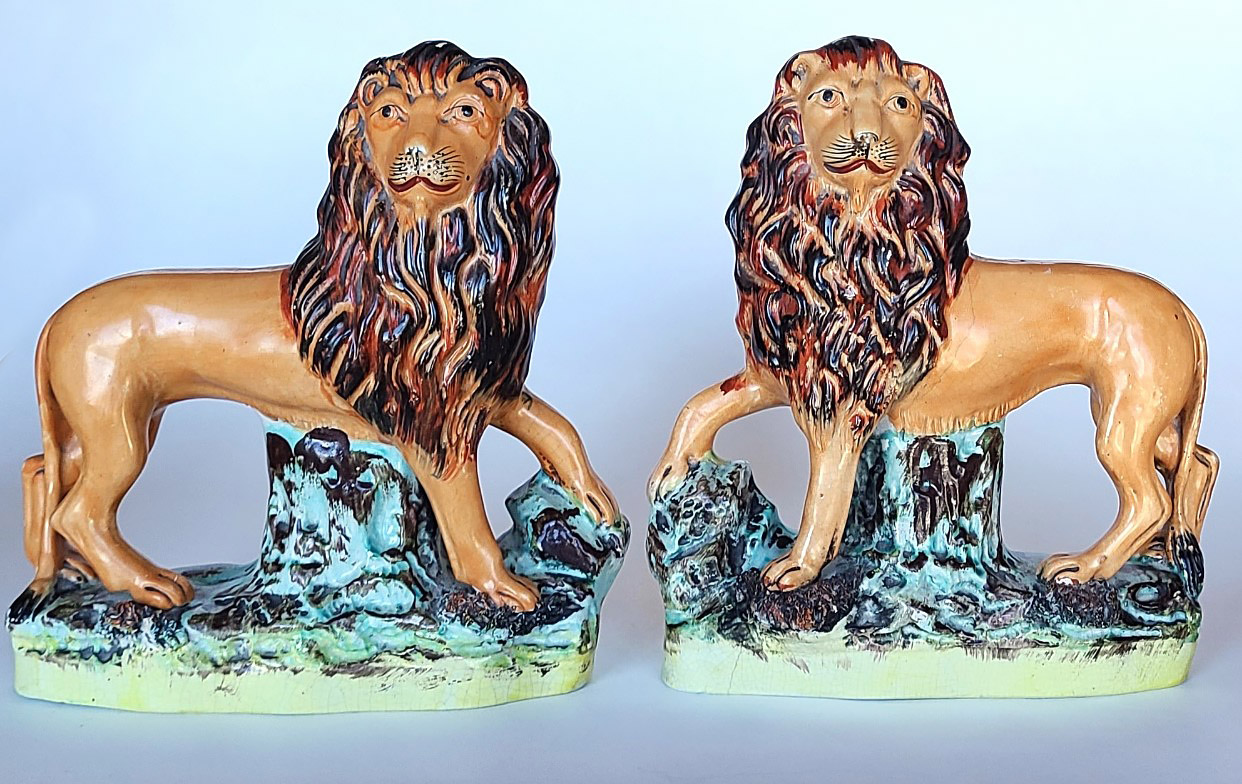
Pair of standing lions
This is a fine pair of Staffordshire lions standing on coloured bases. Each lion is approximately 10” tall and dates to about 1860. These figures may be found in Harding’s Book Two, page 259.

Rare figure of Victorian card playing
At first glance, this may appear to be an ordinary arbour figure. But upon closer inspection, one can see these three people are engaged in a game of cards.
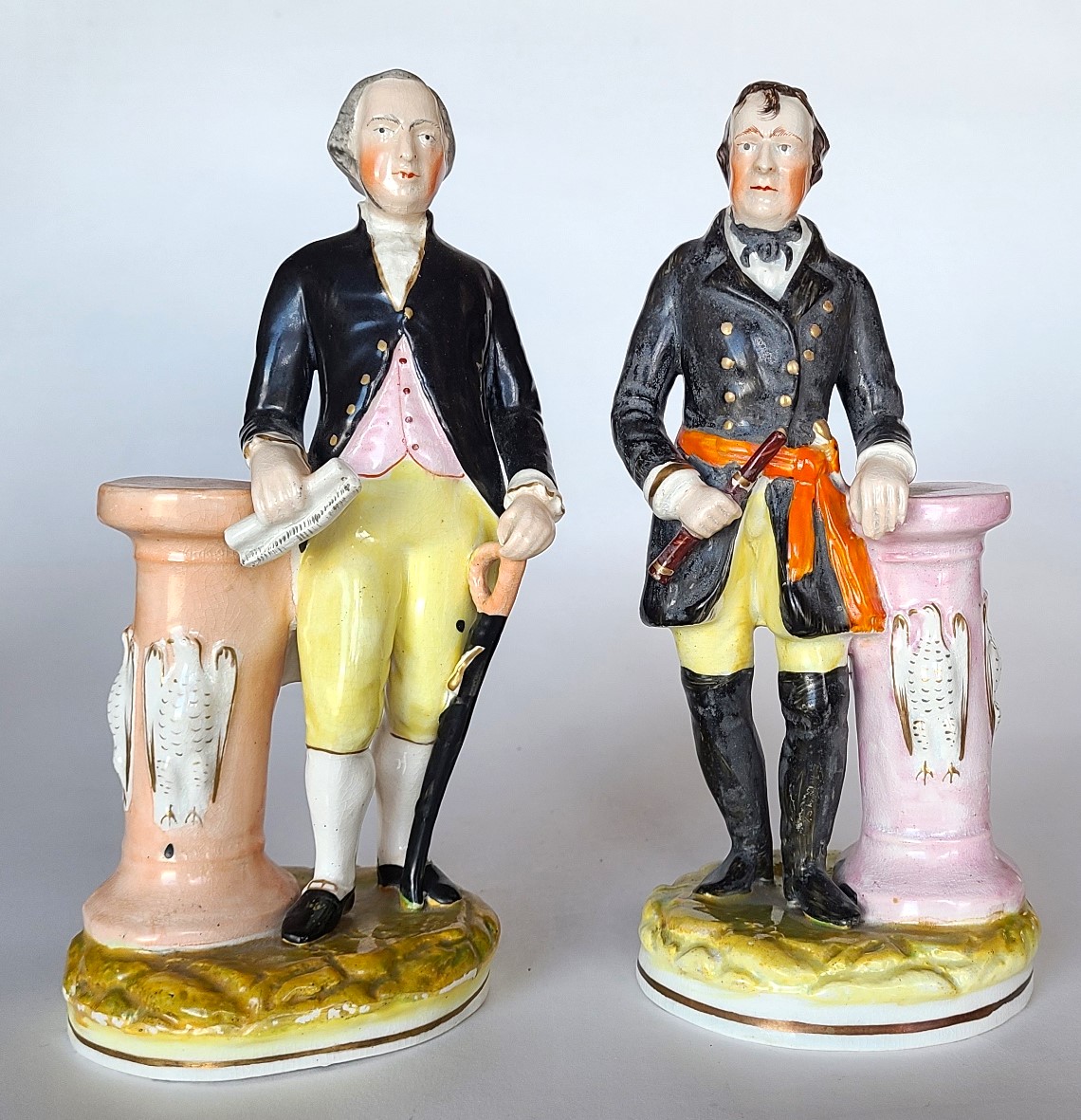
George Washington and Zachary Taylor
This is a very rare pair of figures portraying George Washington and Zachary Taylor. They stand approximately 9” and 9.1″ tall, and date to approximately 1850.
Membership
We warmly welcome new members – join us for free!
Wherever you are in the world, whether you are an experienced collector, a researcher interested in the folk art of England, or just someone who is intrigued by Staffordshire figures, please join us and get the rest of this year for free! Stay with us next year and pay an annual fee of £45 / $50 per household in January.
